What Is Estrogen Dominance? Your Ultimate Guide to Understanding High Estrogen, Hormonal Imbalance, and How to Restore Balance Naturally
Introduction
What Is Estrogen Dominance?
Estrogen dominance is a type of hormonal imbalance in which the body has too much estrogen compared to other hormones, mainly progesterone in women and testosterone in men. It’s not always about high estrogen levels but rather an unhealthy ratio between hormones.
This imbalance is most common in women over 35, especially during perimenopause, but it can also affect men. In both cases, excess estrogen can disrupt your physical, emotional, and mental well-being.
Knowing what estrogen does—and how it can become unbalanced—is the first step toward naturally supporting your hormone health.
What Does Estrogen Do in the Body?
Estrogen is an important hormone that helps your body work properly. Women have more estrogen than men, but men need it too, just in smaller amounts.
Here’s a simple look at what estrogen does:
What are the effects of estrogen in women?
1. Controls periods and fertility
2. Keeps skin, hair, and nails healthy
3. Supports breast health
4. Keeps the vagina and uterus healthy
5. Affects mood and focus
What are the effects of estrogen in men?
1. Keeps bones strong
2. Supports memory and mood
3. Helps with sex drive and sperm production
4. Helps manage body fat
5. Supports heart and blood flow
Your body needs the right amount of estrogen. But when estrogen becomes dominant, it can cause health issues. This can happen if your body makes too much estrogen, doesn’t clear it out properly, or drops other hormone levels too low.
What Are the Types of Estrogen and Normal Estrogen Levels in Men and Women?
There are three main types of estrogen:
1. Estradiol (E2): The strongest and most active form. It’s the main estrogen in women during their reproductive years.
2. Estrone (E1): A weaker form of estrogen. It becomes the main type after menopause.
3. Estriol (E3): The weakest form. It’s mostly produced during pregnancy.
Everyone has estrogen, but normal levels differ for men and women, and they can change with age, pregnancy, and menopause.
What are the Normal Estrogen Levels in Women?
Typical estrogen levels in adult women (measured in pg/mL):
-Follicular phase: 20–150
-Ovulation: 40–350
-Luteal phase: 30–450
-Postmenopausal: 10–50
What are the Normal Estrogen Levels in Men?
Typical estrogen levels in adult men (measured in pg/mL):
-Estradiol: 10–40
How Does Estrogen Interact with Other Hormones?
Estrogen doesn’t work alone—it interacts closely with other hormones like progesterone, testosterone, cortisol, insulin, and thyroid hormones. Keeping these hormones in balance is key to overall health.
Estrogen and Progesterone in Women
These two hormones work together throughout the monthly menstrual cycle:
Days 1–14 (Follicular Phase): Estrogen rises steadily to prepare the body for ovulation. Progesterone remains low.
Around Day 14 (Ovulation): Estrogen peaks and triggers the release of an egg.
Days 15–28 (Luteal Phase): Levels of progesterone rise during this phase to support a potential pregnancy. Estrogen levels drop, then rise again minimally.
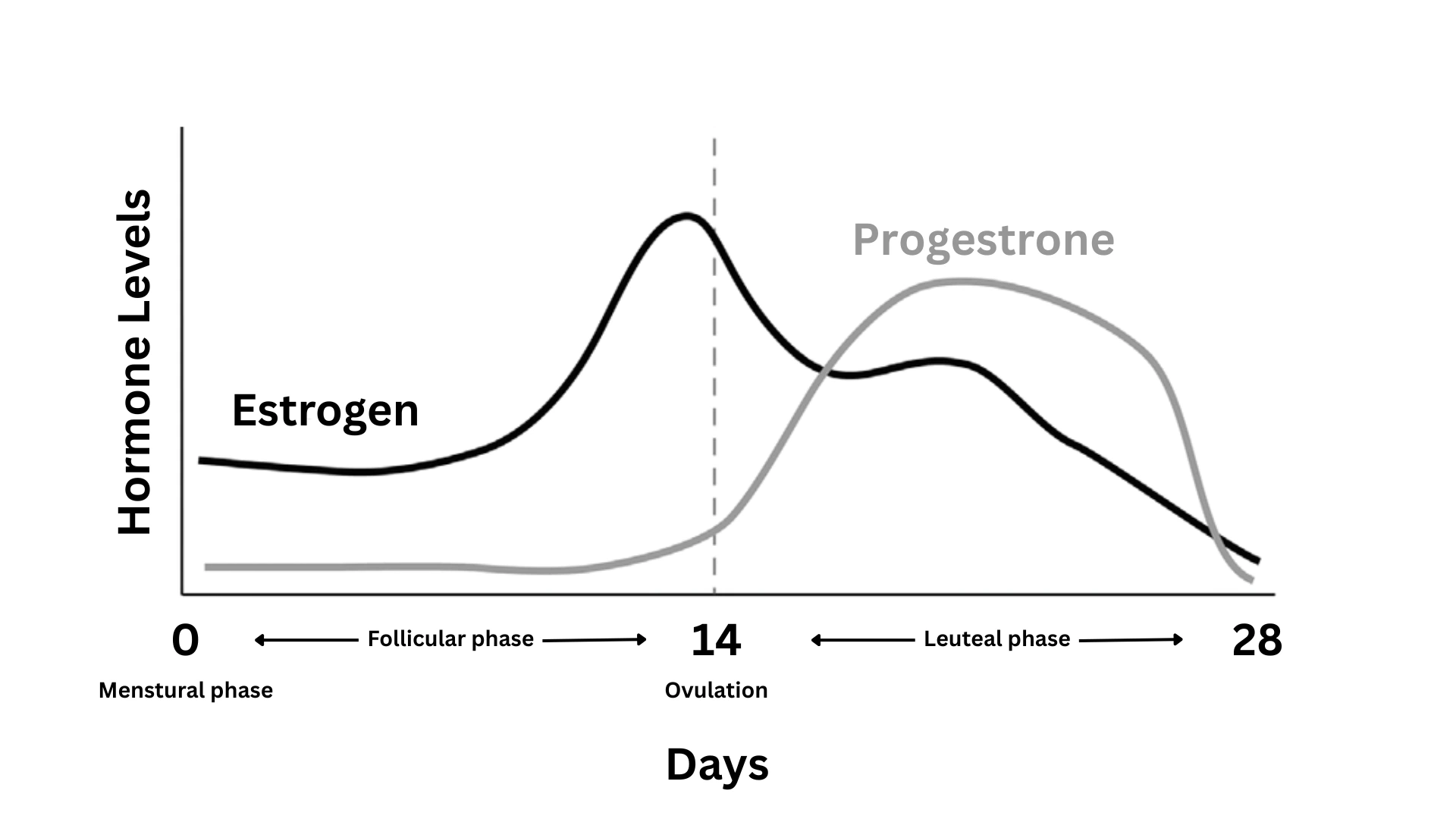
Estrogen and Testosterone in Men
In men, estrogen and testosterone levels are more stable but still fluctuate slightly day-to-day:
-Testosterone levels are usually highest shortly after waking up and gradually decrease throughout the day.
-Estrogen (mainly estradiol) remains relatively steady but is affected by body fat, liver health, and testosterone levels (since some testosterone converts into estrogen).
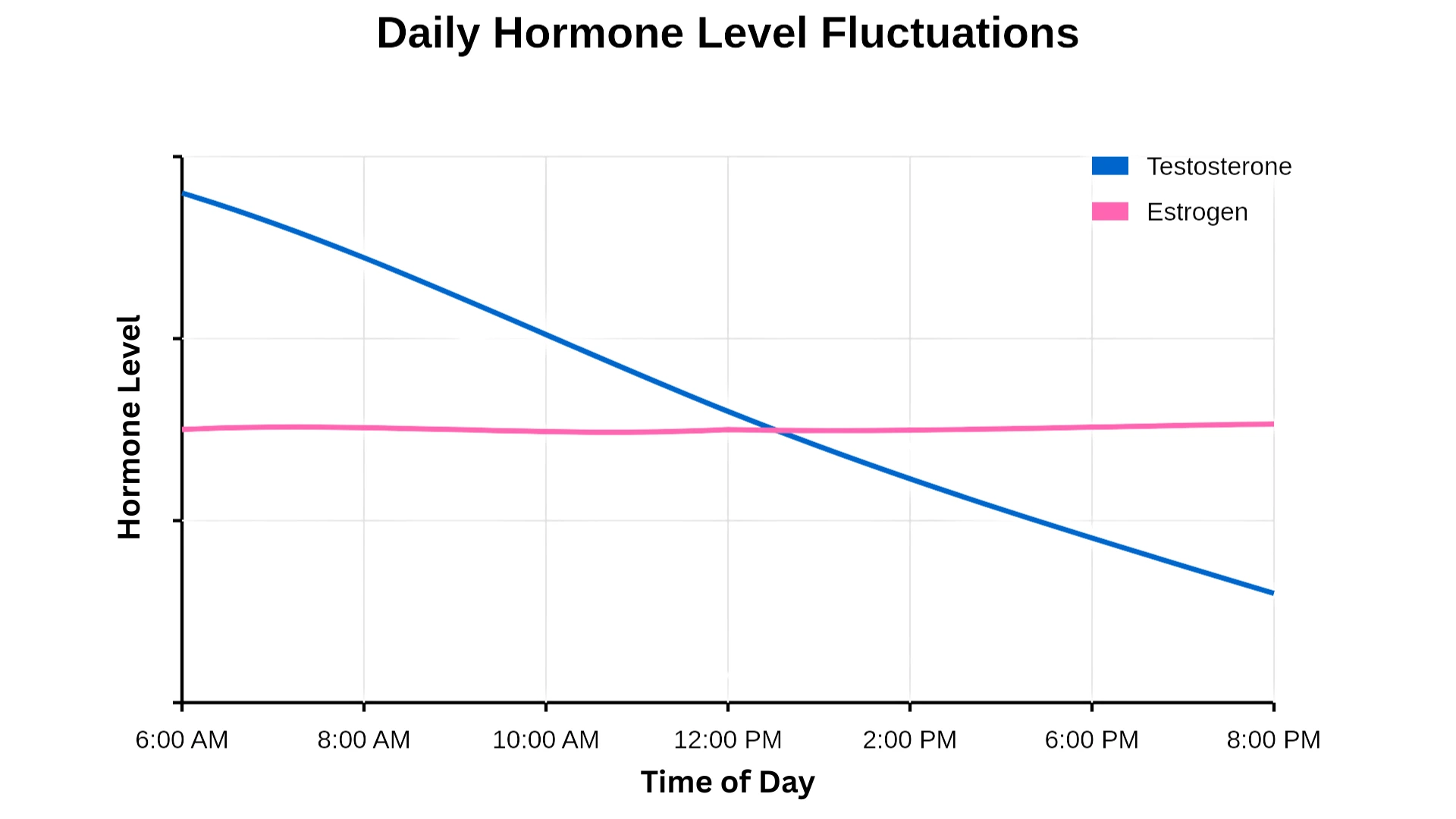
Estrogen and Thyroid, Insulin, and Cortisol
Estrogen also impacts other hormones:
-Thyroid: High estrogen can block the activity of thyroid hormones, leading to tiredness and weight gain.
-Insulin: It can increase insulin resistance, leading to poor control of blood sugar.
-Cortisol: It also affects cortisol, your stress hormone, which can influence mood, cravings, and inflammation.
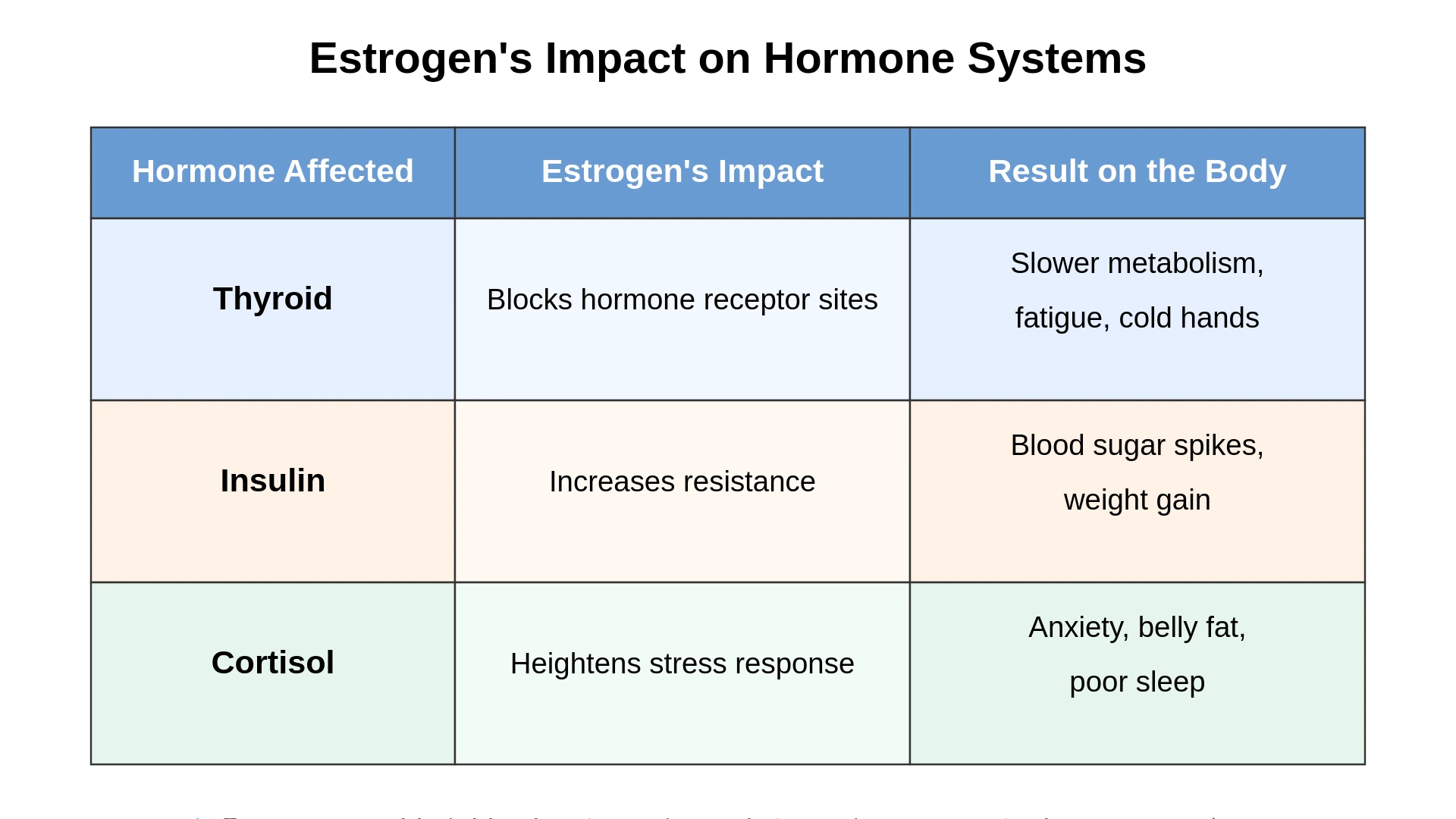
What Causes Estrogen Dominance?
In Women
1. Stress: Too much stress boosts cortisol and lowers progesterone, messing up your hormone balance.
2. Birth Control: The pill adds extra estrogen to your system.
3. Liver Issues: A sluggish liver struggles to remove estrogen.
4. Toxins: Chemicals in plastics and makeup can mimic estrogen.
5. Body Fat: Extra fat, especially around the belly and hips, makes more estrogen.
6. Thyroid Trouble: A slow thyroid delays hormone removal.
7. Food Choices: Eating dairy or meat with added hormones, processed foods with preservatives, or foods in BPA plastics can raise estrogen. Foods causing insulin resistance and alcohol (which slows detox) also contribute.
In Men
1. Body Fat: Extra weight turns testosterone into estrogen using enzymes.
2. Liver Issues: A weak liver can’t clear estrogen well.
3. Low Testosterone: Too little testosterone throws off the balance.
4. Toxins: Pollutants can act like estrogen in the body.
5. Food Choices: Dairy or meat with hormones, processed foods with preservatives, or BPA plastics can increase estrogen. Alcohol and foods leading to insulin resistance may help, too.
What Are the Symptoms of Estrogen Dominance?
Symptoms of Estrogen Dominance in Women
1. Heavy or Irregular Periods: Periods may be heavier or longer, with more cramps.
2. Mood Swings: You might feel cranky, happy, or teary for no reason.
3. Weight Gain: Extra weight could hit your hips, thighs, or belly.
4. Sore Breasts: Breasts may feel tender or puffy.
5. Fatigue: You might feel tired despite rest.
6. Headaches: More headaches or migraines may occur.
Approximately 75% to 80% of women experience vasomotor symptoms such as hot flashes and night sweats during menopause, which are linked to hormonal fluctuations like estrogen dominance (NCBI). These signs can appear during menopause or after a hysterectomy.
Symptoms of Estrogen Dominance in Men
Low Energy: You might feel drained even with sleep.
Belly Fat: Fat may build up around your middle.
Low Libido: Sex drive or performance might drop.
Chest Growth: The chest may grow or feel tender (gynecomastia).
Mood Changes: You could feel irritable or down.
Weak Muscles/Focus: Muscle tone or concentration might fade.
How Estrogen and Other Health Conditions Are Linked
High estrogen levels can trigger or worsen several health issues. Let’s explore how this happens
1. Can Too Much Estrogen Cause Cancer? Excess estrogen might fuel cell growth, potentially raising the risk of breast or uterine cancer. This link makes some wonder, “Does too much estrogen cause cancer?”—a question best answered with a doctor’s input.
2. Perimenopause and Menopause: High estrogen during perimenopause can spark hot flashes and mood swings. After menopause, estrogen dominance might lead to weight gain or tiredness as levels stay imbalanced.
3. Erectile Dysfunction: Too much estrogen in men can drop testosterone, which may cause erectile dysfunction by messing with blood flow and desire.
4. Endometriosis and Estrogen Dominance: High estrogen can make endometriosis worse, boosting inflammation and causing painful, heavy periods.
5. Estrogen Edema and Estrogen Flush: Excess estrogen might cause fluid buildup (estrogen edema) in legs or hands, or trigger estrogen flush with sudden skin redness and warmth.
6. Infertility: Excess estrogen can disrupt ovulation, potentially leading to infertility by affecting egg quality. In men, excess estrogen can reduce sperm production and motility, leading to infertility.
7. PCOS: High estrogen may worsen PCOS by promoting ovarian cysts and hormonal imbalances. The symptoms being irregular periods, stubborn weight gain, difficulty losing weight, acne, and hairfall.
8. Insulin Resistance: Elevated estrogen can contribute to insulin resistance, impairing glucose regulation in the body.
How Can You Test for Estrogen Dominance?
Wondering if estrogen dominance is affecting you? Doctors have a few ways to check your hormone levels. Here’s what they might suggest:
-How to Test for Estrogen Dominance: Doctors can use a blood test or a saliva test to measure your estrogen and progesterone levels. These tests help determine if estrogen is too high compared to progesterone.
1. Blood Test: This measures total estrogen and progesterone levels in your system.
2. Saliva Test: This tracks free estrogen levels and how they vary over time.
-When and What to Test: The best time is during your menstrual cycle, around days 19-21 for women, or anytime for men. They’ll focus on total estrogen and progesterone to spot any imbalance.
These steps can uncover if high estrogen is the issue, pointing you toward the next step.
How Can You Balance Estrogen Through Diet?
When your body has too much estrogen compared to other hormones, you may develop estrogen dominance. This guide highlights dietary tactics, including estrogen-blocking foods and estrogen foods to avoid, to lower estrogen levels naturally.
What are the best estrogen-blocking foods?
Your daily food choices significantly impact your hormone balance. An anti-estrogenic diet gives your body the nutrients needed to process estrogen efficiently.

Cruciferous vegetables
Broccoli, cauliflower, cabbage: Contain DIM (diindolylmethane), which supports healthy estrogen metabolism
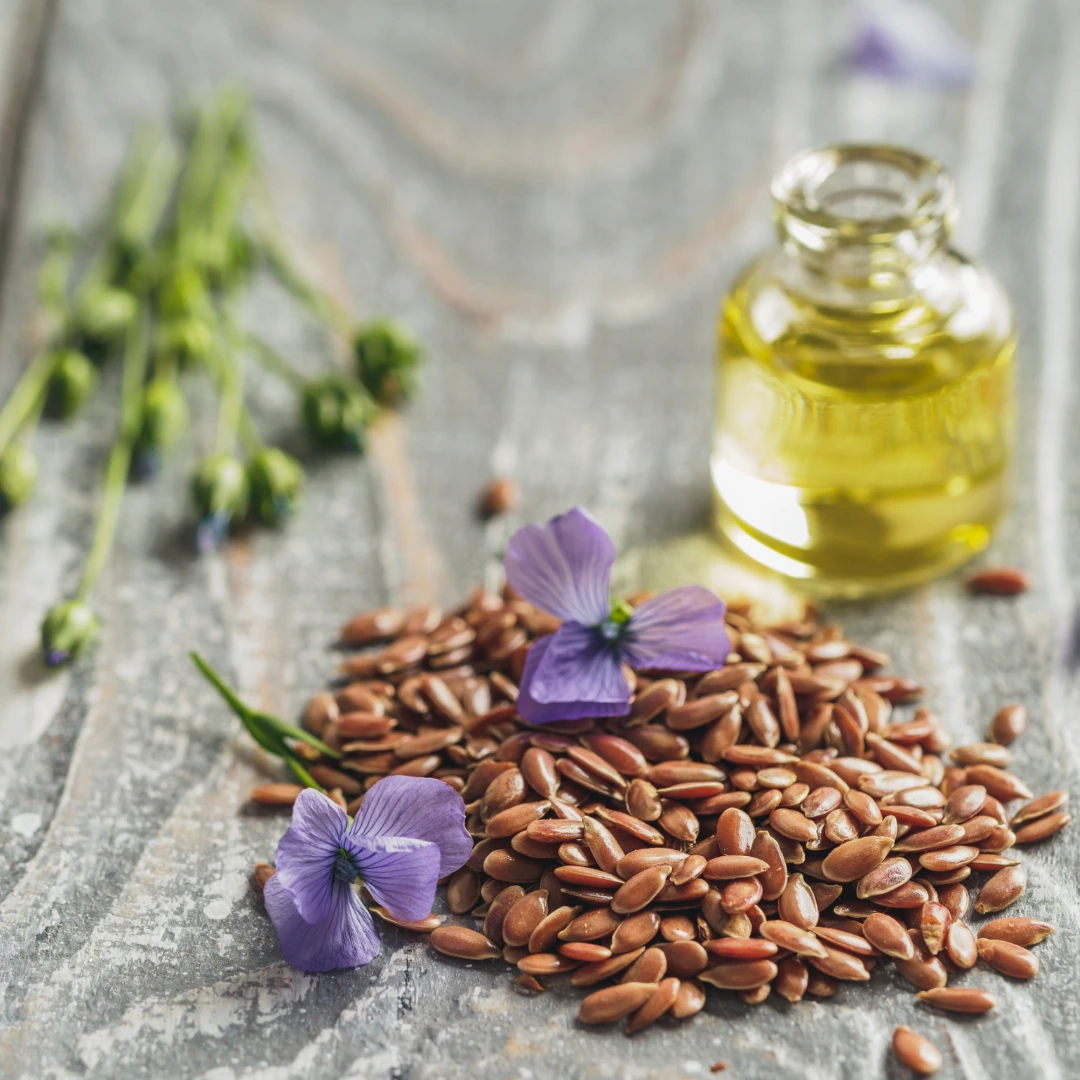
Fiber-rich foods
Flaxseeds, chia seeds, and pumpkin seeds: Help remove excess estrogen through digestion

Healthy fats
Avocados, olive oil: Serve as key components in the synthesis and regulation of hormones, which are critical for numerous bodily functions.
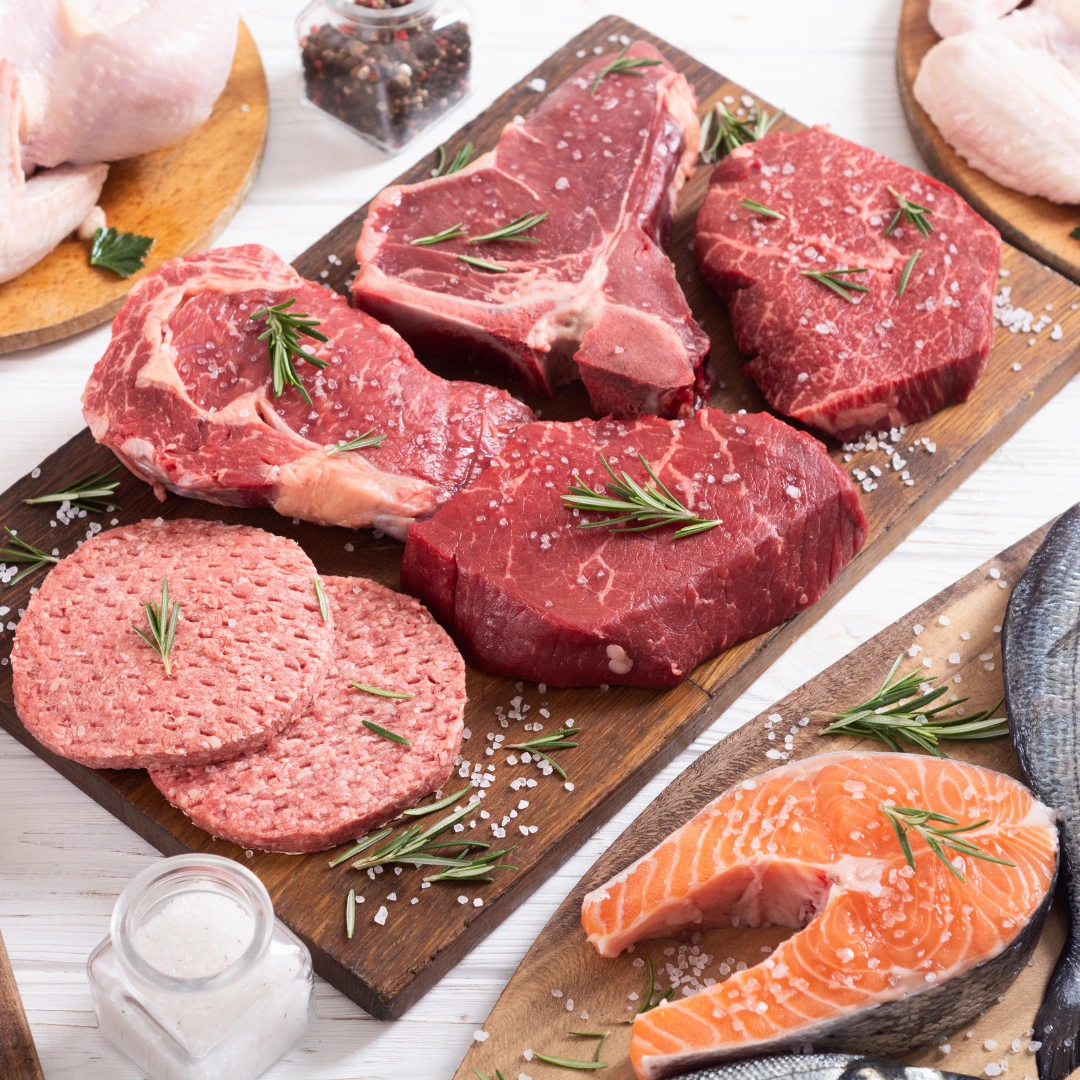
Lean proteins
Wild-caught fish, organic poultry: Provide building blocks for hormone balance
Which Foods Are High in Estrogen That You Should Avoid?
When following the diet for estrogen dominance, be cautious about these foods with estrogen to avoid:
-Soy products like tofu, tempeh, and soy milk (which contain phytoestrogens)
-Conventional dairy (may contain added hormones)
-Non-organic meats (estrogen in meat and dairy is common in conventional farming)
-Highly processed foods with certain preservatives
-Alcoholic beverages (burden your liver’s detoxification capacity)
-Chickpeas and certain legumes (which contain plant-based estrogens)
Common question: “Are eggs high in estrogen?” Research suggests that eggs contain minimal estrogen and generally don’t significantly impact hormone levels in most people.
What’s the Best Diet Plan for Estrogen Balance?
An effective anti-estrogen-dominance diet plan includes:
Organic produce whenever feasible

Sufficient protein with each meal
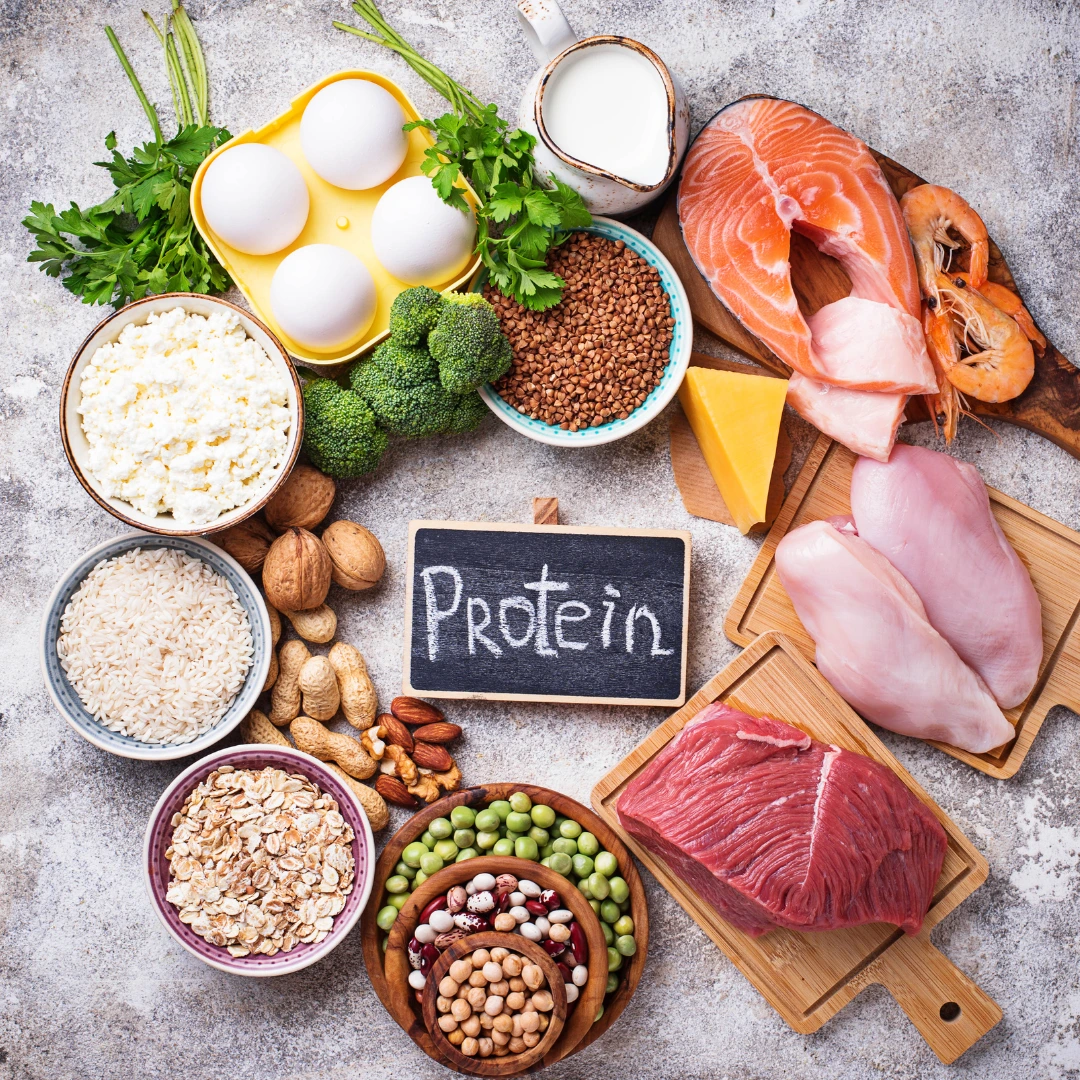
Inclusion of anti-estrogen foods.

Hormone-free animal products

Minimal processed foods and refined sugar
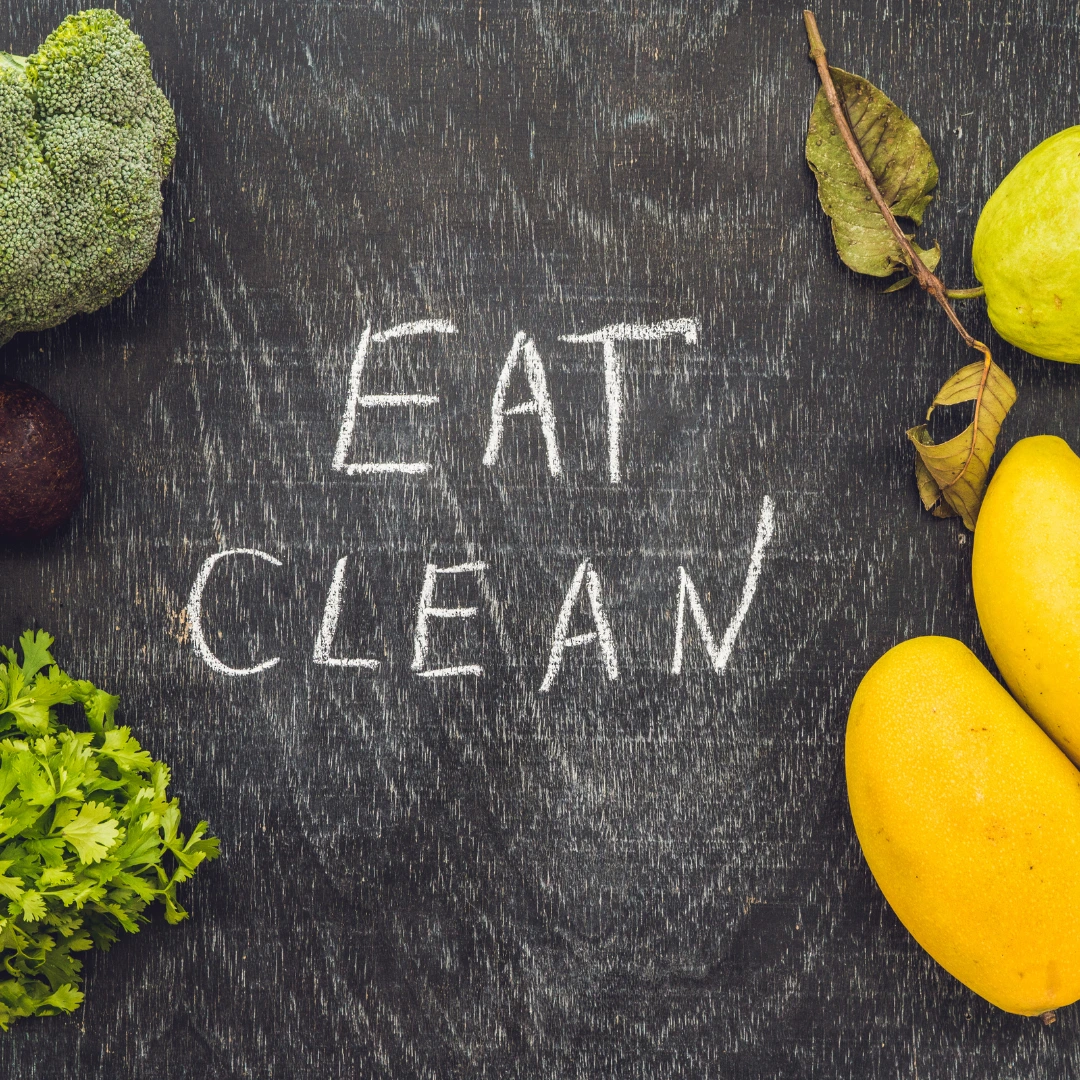
Adequate hydration with filtered water

For men concerned about hormonal health, understanding which estrogen foods men should avoid and incorporating foods that lower estrogen levels in males can support testosterone production and overall vitality.
Which Supplements Help Balance Estrogen Levels?
When diet alone isn’t enough, certain supplements for high estrogen may help. Always consult with a healthcare provider before starting any new supplement. This section helps you understand some of the best natural estrogen blockers available and how they can help you reduce estrogen naturally.
What Natural Supplements Can Help Control Estrogen?
These anti-estrogen supplements support the body’s natural processes to modulate, metabolize, or reduce estrogen levels without necessarily blocking it outright:
1. DIM (Diindolylmethane): An estrogen detox supplement derived from cruciferous veggies that boosts healthy estrogen metabolism and reduces harmful byproducts, aiding regulation.
2. Indole-3-Carbinol (I3C): Converts to DIM in the body, offering a complementary way to block estrogen naturally and support hormonal balance.
3. Milk Thistle: Contains silymarin to enhance liver enzymes, clear hormones, and support natural treatment for estrogen dominance.
4. Zinc: Balances hormones, offering a gentle approach within alternative medicine for estrogen blockers.
5. Vitamin C: Supports adrenal health and reduces stress that disrupts hormone signaling, indirectly regulating estrogen.
6. Ashwagandha: An adaptogen that supports hormone equilibrium, though its effect on increasing estrogen varies according to research.
Which Herbs Can Help Lower Estrogen Levels Naturally?
Herbs offer a natural boost for estrogen dominance treatment naturally:
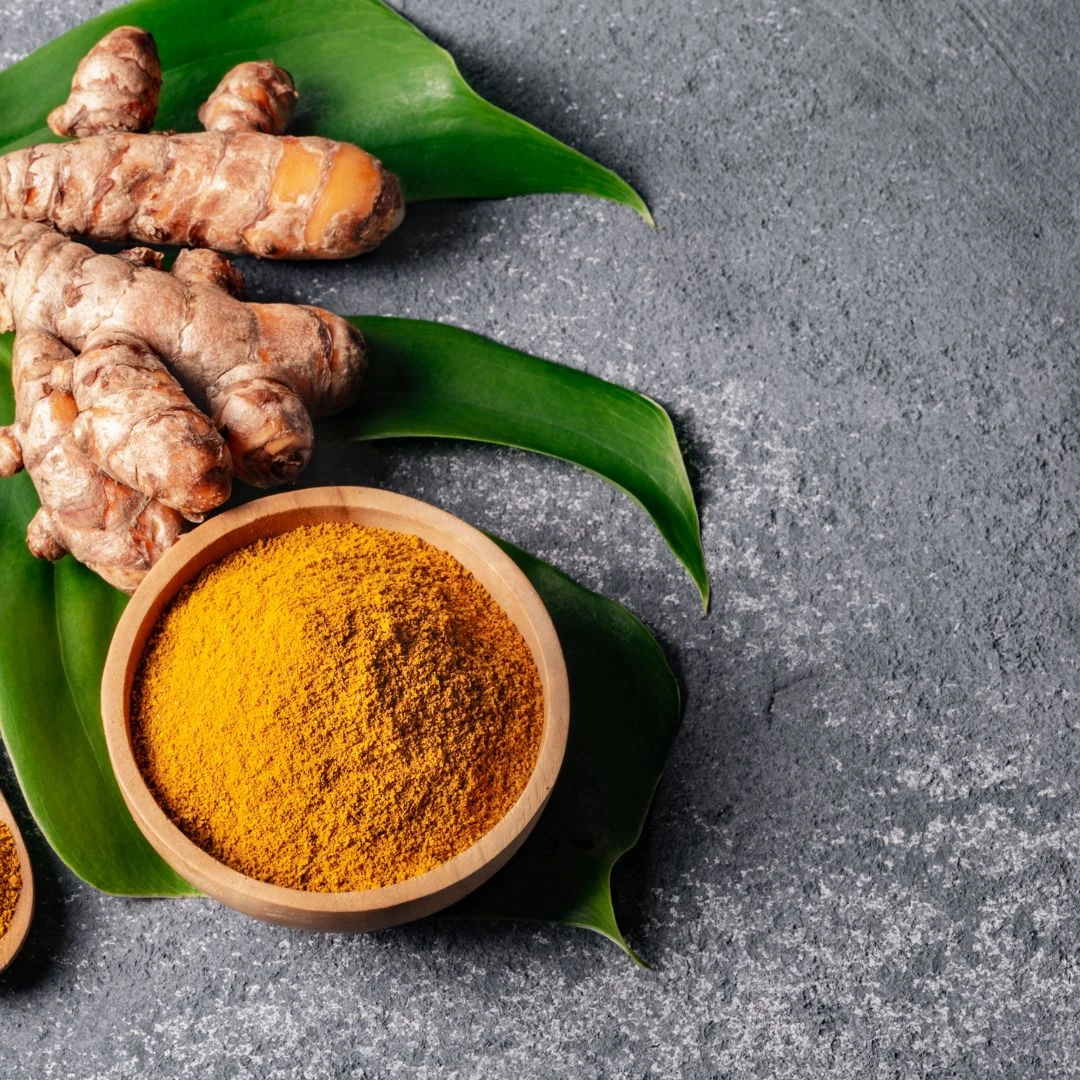
Turmeric
Reduces inflammation linked to hormone imbalances.

Chasteberry
Balances estrogen and progesterone.
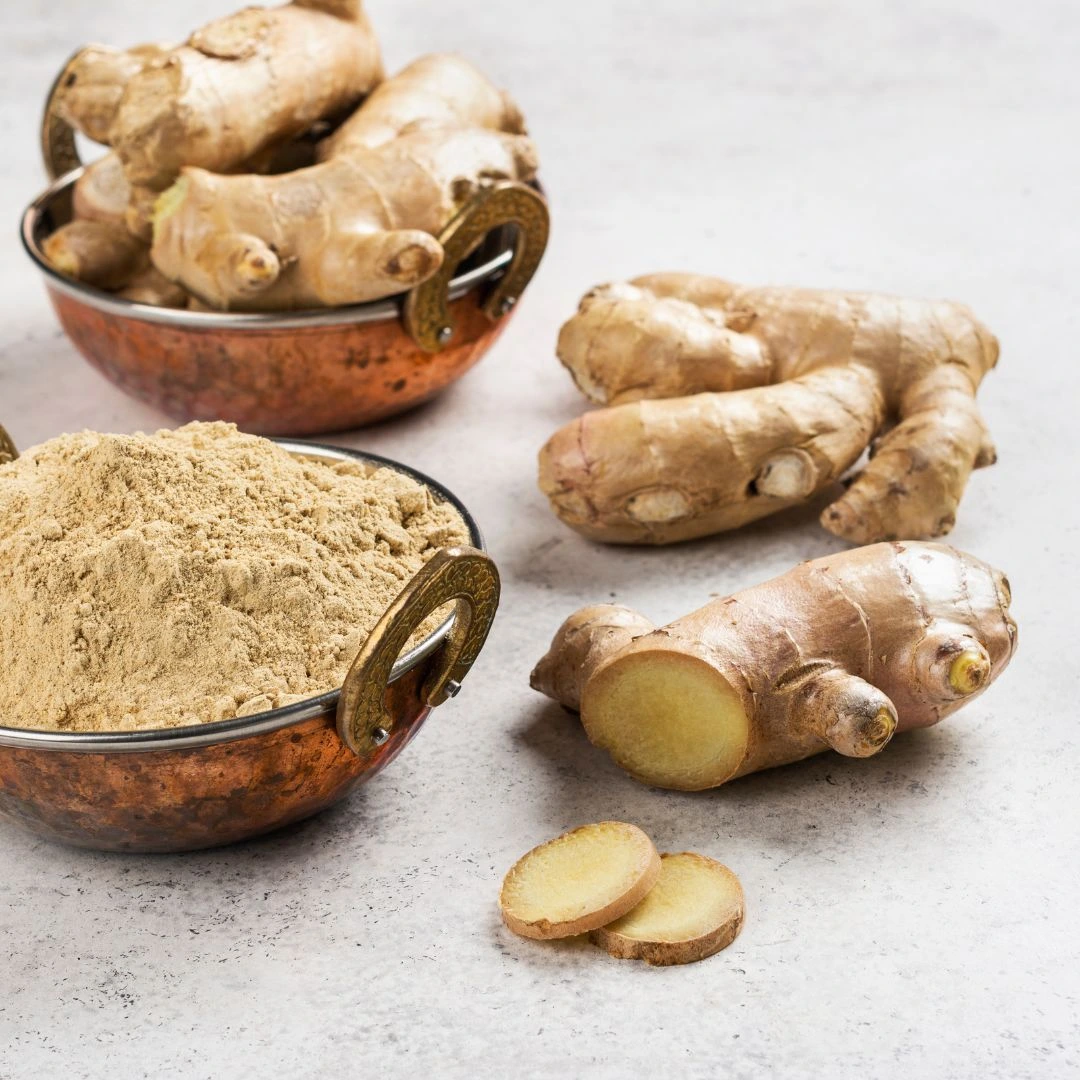
Ginger
Acts as one of the estrogen receptor antagonists in natural foods in herbal form.

Maca Root
Promotes overall hormone harmony without raising estrogen.
How Can Lifestyle Changes Help Fix Estrogen Imbalance?
Lifestyle adjustments are vital for tackling estrogen dominance and supporting natural treatment for estrogen dominance. Beyond diet and supplements, these easy steps can fix estrogen dominance naturally and promote estrogen detox.
What Lifestyle Changes Support Estrogen Balance?
What Lifestyle Changes Support Estrogen Balance?
1. Use a Clean Water Filter: Removes toxins that upset estrogen balance.
2. Choose Natural Cleaners: Avoids chemicals mimicking estrogen.
3. Pick Safe Skin Products: Opt for gentle, non-harmful ingredients.
4. Switch to Glass or Steel: Cuts plastic-related estrogen exposure.
5. Move Daily: 30 minutes of activity reduces excess estrogen.
6. Keep a Healthy Weight: Extra fat can boost estrogen production.
These steps offer a holistic way to manage estrogen dominance and aid estrogen detox.
How Does Stress Impact Estrogen Balance?
Stress can worsen estrogen dominance, creating a hormonal ripple. Natural stress relief helps regulate estrogen levels:
1. Exercise: Try light resistance workouts with breaks to ease stress.
2. Meditate: Use short guided sessions for daily calm.
3. Rest Well: Get 7-9 hours of sleep to steady hormones.
4. Limit Caffeine: Cut coffee to avoid stress hormone spikes.
5. Breathe Deeply: Use slow breaths to relax your body.
6. Enjoy Nature: Spend time outdoors to lower stress effects.
7. Balance Work: Set boundaries for personal renewal.
These habits support estrogen detox and balance.
How Can Estrogen Dominance Be Treated?
Estrogen dominance, characterized by excess estrogen relative to progesterone, can be managed with effective treatments tailored for both men and women. Understanding these options is key to restoring hormonal balance.
What Treatments Do Doctors Recommend for Estrogen Dominance?
Doctors often combine medical solutions with lifestyle changes to address high estrogen levels. Here are typical recommendations:
1. Hormone Therapy: Progesterone cream balances hormones for women; testosterone therapy helps men.
2. Medications: Selective estrogen receptor modulators (SERMs) reduce estrogen effects for all. Some effective SERMs include Tamoxifen, Raloxifene, Enclomifene, and Toremifene
3. Birth Control Adjustments: Switching from estrogen-heavy birth control can ease side effects in women.
4. Lifestyle Tweaks: Diet and exercise support hormone regulation for everyone.
5. Supplements: DIM or calcium D-glucarate aids estrogen metabolism.
For specific issues:
1. Endometriosis: Hormonal treatments alleviate symptoms.
Cancer Risk: High estrogen may warrant regular screenings.
When Should Women Seek Medical Help for Estrogen Dominance?
Women should consult a doctor if they experience these signs of hormonal imbalance:
1. Persistent acne that is unresponsive to care.
2. Noticeable hair loss or thinning.
3. Ongoing breast tenderness or sore nipples.
4. Severe depression or mood swings.
5. Unexplained weight gain, linked to an estrogen-dominant body type.
6. Constant fatigue despite rest.
7. Sudden estrogen flush or estrogen edema (swelling).
When Should Men Seek Medical Help for Estrogen Dominance?
Men should see a doctor if they notice these signs of hormonal imbalance:
1. Reduced libido or sexual interest.
2. Erectile dysfunction or poor performance.
3. Loss of muscle mass or strength.
4. Increased breast tissue or tenderness.
5. Persistent fatigue.
6. Unexplained weight gain.
FAQs: Your Common Questions Answered Here
In women, estrogen dominance may grow during perimenopause with hormonal shifts, while in men, it can rise with age as testosterone drops and fat converts more androgens to estrogen, worsened by slower liver function.
Items such as soy products, chickpeas, dried apricots, prunes, sesame seeds, and dairy like milk and eggs contain estrogen or phytoestrogens that may raise estrogen levels, with effects differing by person.
To lower estrogen fast, eat more fiber, avoid alcohol and processed foods, exercise, and talk to a doctor about options like aromatase inhibitors.
Reducing estrogen can lower the risk of certain hormone-related conditions, but it might also cause bone weakening, mood swings, or reduced sex drive if not carefully managed.
Estrogen-dominant body types often feature increased fat storage, especially around the hips, thighs, and chest. In females, this may manifest as a pear-shaped figure, with softer curves, water retention, and sometimes breast tenderness. In males, it can lead to a rounded abdomen, reduced muscle tone, and gynecomastia (enlarged breast tissue), often linked to higher fat converting testosterone to estrogen.
Yes, chickpeas contain phytoestrogens (isoflavones) that mimic estrogen, though their impact is mild and depends on intake.
Excess estrogen can aggravate Polycystic Ovary Syndrome (PCOS) by throwing off the balance with progesterone, leading to intensified issues like irregular cycles and fertility difficulties.
Yes, too much estrogen can overactivate oil glands, especially in PCOS, resulting in oily skin due to hormonal shifts.
Yes, too much estrogen might increase insulin resistance, linking to high blood sugar in conditions like PCOS or obesity, though more research is needed.
Birth control with high estrogen may trigger weight gain, mood changes, nausea, or a higher clot risk, especially with stronger doses.
Endometriosis often involves higher estradiol (E2) levels, which encourage tissue growth, though normal ranges vary and require a doctor’s test for accuracy.
Yes, you can naturally reverse it with a fiber-rich diet, consistent exercise, stress management like meditation, and avoiding environmental estrogens, though it may take time.
Supplements like DIM, calcium D-glucarate, and zinc help break down and remove excess estrogen, supporting hormone balance with medical advice.
These supplements, like DIM or resveratrol from grapes, block the aromatase enzyme that turns androgens into estrogen, helping to decrease levels.
In men, these blockers can raise testosterone, build muscle, and shrink gynecomastia, though they may also bring joint discomfort, tiredness, or heart risks if unchecked.
Men might consider aromatase inhibitors like Anastrozole or natural aids like DIM and calcium D-glucarate, but a doctor’s guidance is key to picking the right option for your health.
Effects from estrogen blockers vary, often showing within 2-6 weeks for symptom relief, depending on the type and your body. Regular doctor check-ins are wise.
Extended use may lead to brittle bones, stiff joints, or heart concerns, so ongoing doctor oversight is important.
